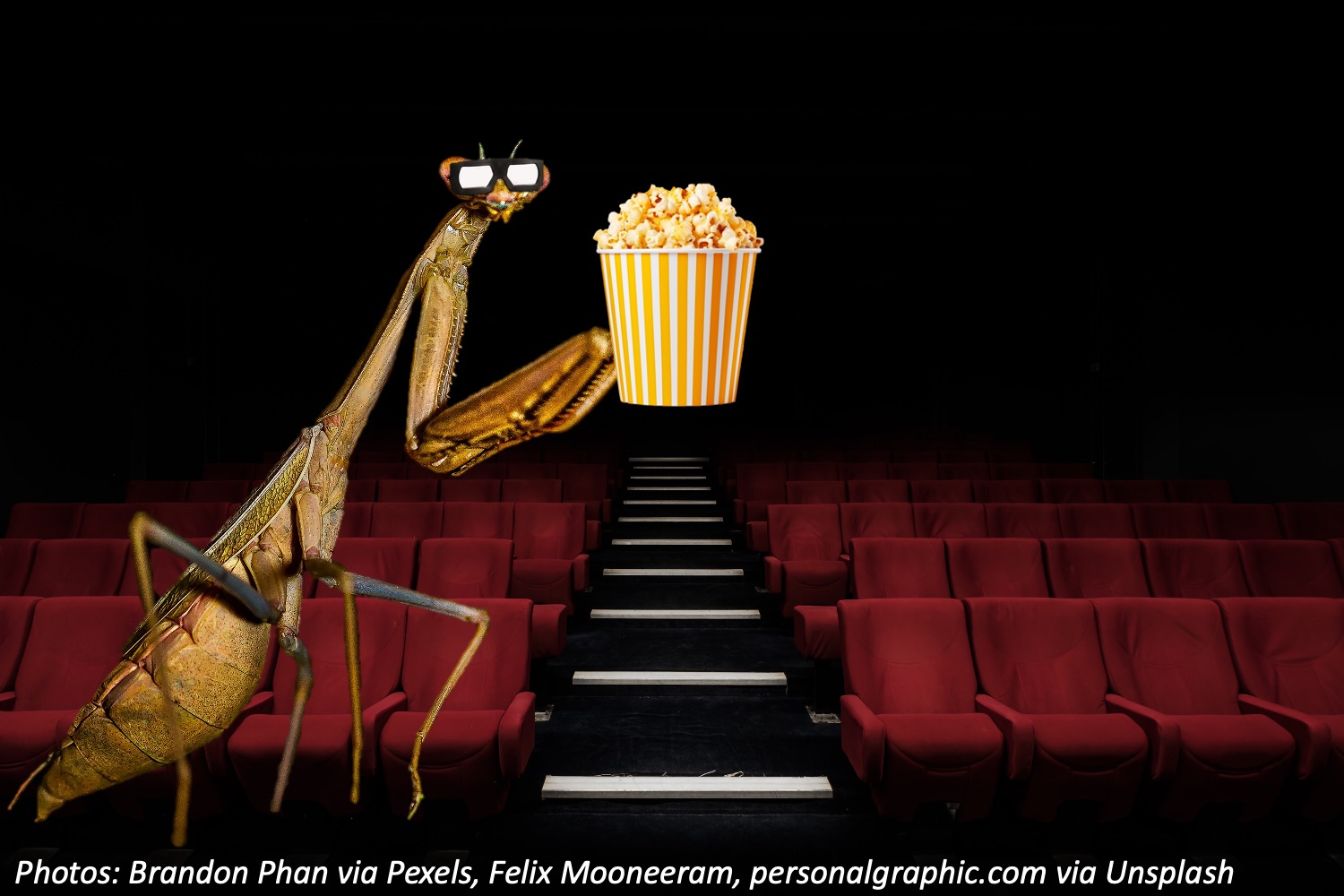When you watch a movie in 3D, you wear funny glasses with one red lens and one blue. Every shape in the movie is drawn in both blue and red, with each blue shape shifted to the left. The bigger the gap between them, the bigger and closer that object looks. Scientists wondered whether insects see in 3D, so they tried out tiny 3D movie glasses on praying mantises — and the answer was yes, Of course, now those bugs want to watch our movies!
Wee ones: A praying mantis has 2 eyes. Do you have more or fewer eyes than that?
Little kids: If you and your pet mantis go to the movies, how many legs do you have altogether? (As an insect, a mantis has 6 legs). Bonus: If 7 bugs go to the movie and you have 10 pairs of glasses for them, how many extra pairs do you have for people?
Big kids: If there are 18 moviegoers, and there are twice as many bugs as people in the crowd, how many are there of each? Bonus: If there are 29 moviegoers and every 4th one is a bug (while the rest are people), what’s the greatest number of bugs you can have?
Answers:
Wee ones: Neither — you have the same number!
Little kids: 8 legs. Bonus: 3 pairs.
Big kids: 12 bugs and 6 people. There are 2 bugs for each person, making sets of 3, and there are 6 sets. Bonus: 8 bugs. There would be only 7 if the 4th one was a bug, then the 8th, etc., but if the FIRST moviegoers is a bug, then you have the 5th, 9th and other numbers 1 more than a multiple of 4. So you can fit in an 8th at 29.



